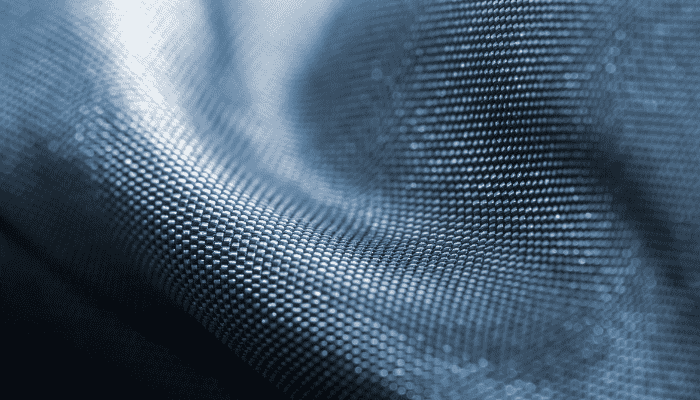Backpack materials have evolved, with high-stretch nylon gaining popularity alongside traditional nylon. But how do they compare in terms of long-term use, durability, and comfort? Let’s dive into the facts.
Understanding the Materials
High-Stretch Nylon typically contains elastane or spandex-embedded weave (often 500D–840D stretch nylon). It allows four-way give, adapting as you move, making it ideal for sportier or travel-oriented packs.
Classic Nylon, such as 1000D ballistic nylon or Cordura, is a rigid, tear-resistant textile favored for heavy-duty and outdoor backpacks.
Abrasion Resistance & Wear Patterns
-
Classic Nylon resists abrasion well and wears gradually, usually fading in color before tearing.
-
High-Stretch Nylon may initially be less abrasion-resistant, but recovers from deformation—ideal for dynamic compression or pack shape shifts.
Over time, classic nylon scuffs are predictable; stretch nylon shows unique stress lines but rarely fails catastrophically.
Tear Resistance & Flex Endurance
-
Classic Nylon withstands sharp objects and pinching—it doesn’t stretch or deform.
-
High-stretch nylon bends under high stress but returns to shape. It resists tearing when flexed dynamically, but may not resist force cuts as well.
Preferred tear-resistant models still use lightweight stretch nylon in combination with reinforcing panels.
Weight & Packability Differences
One of the most noticeable differences lies in weight:
-
Classic Nylon: Heavier due to its dense weave and coatings (e.g., 1000D Cordura or ballistic nylon). While it provides top-tier protection, it adds bulk.
-
High-Stretch Nylon: Lighter and more compact. This material compresses easily when packing, making it great for travelers who want minimal weight.
For ultralight travelers or those doing one-bag travel, high-stretch nylon offers excellent packability.
Comfort & Stretch Performance
High-stretch nylon shines in dynamic comfort. It moves with your body, which is particularly beneficial in the following situations:
-
Long hikes or walks
-
Biking or commuting
-
Wearing bulky jackets or gear
Classic nylon, on the other hand, offers structured support but no give. It’s best when rigidity is an advantage, such as in carrying heavy or fragile tech gear.
Water Resistance & Coating Behavior
Both fabrics can feature DWR (durable water repellent) or PU coatings, but:
-
Classic Nylon holds water longer when soaked, but dries more slowly.
-
High-stretch nylon repels water well initially, but frequent stretching may wear coatings faster.
If water protection is crucial, look for sealed zippers and inner liners in either fabric.
Best Use Cases for Each Fabric Type
| Activity | Best Material | Why |
|---|---|---|
| Urban/Office | Classic Nylon | Professional look, structured form |
| Hiking | High-Stretch Nylon | Flexibility, comfort, reduced chafing |
| Travel | Both (combo ideal) | Stretch nylon for flexibility, classic for base |
| Gym/Commuting | High-Stretch Nylon | Breathable, compresses easily |
| Photography/Tech | Classic Nylon | Offers better protection for gear |
Cost & Brand Examples
-
High-Stretch Nylon is used by brands like Aer, Patagonia, and Arc’teryx Veilance—often in their active or packable lines.
-
Classic Nylon appears in bags from GORUCK, Tom Bihn, and Mystery Ranch—often targeting tactical, military, or rugged users.
High-stretch nylon tends to be pricier per gram due to its specialized weave and elasticity.
Maintenance & Aging
High-Stretch Nylon:
-
Requires gentle washing to avoid degrading elasticity.
-
Should be air-dried only.
-
Coatings may need reapplication sooner with heavy use.
Classic Nylon:
-
Easier to scrub and machine-wash (gentle cycle).
-
Can handle more abuse before showing damage.
Neither fabric loves high heat or harsh detergents.
FAQs: High-Stretch Nylon vs Classic Nylon
Q1: Is high-stretch nylon strong enough for long-term travel?
Yes, especially when used in hybrid packs or with reinforced zones.
Q2: Which fabric is better for rainy conditions?
Classic nylon with PU or TPU coating holds water out longer. But stretch nylon dries faster once wet.
Q3: Do high-stretch nylon bags sag when fully loaded?
They may flex, but quality construction includes internal frames or reinforced back panels to minimize this.
Q4: Can I use high-stretch nylon for hiking backpacks?
Absolutely. Many performance hiking packs now use this material for comfort and movement.
Q5: Which is more eco-friendly?
Recycled classic nylon is more common, though brands are starting to offer recycled stretch versions too.
Conclusion & Comparison Table
Here’s a quick overview to help you decide:
| Feature | High-Stretch Nylon | Classic Nylon |
|---|---|---|
| Durability | Moderate | High |
| Flexibility | Excellent | Minimal |
| Abrasion Resistance | Good | Excellent |
| Tear Resistance | Moderate | High |
| Water Resistance | Moderate | High |
| Weight | Light | Heavy |
| Comfort | High | Medium |
| Cost | Moderate-High | Moderate |
Verdict: Choose high-stretch nylon for active, flexible use like travel or commuting. Stick with classic nylon when durability and structure matter most, like heavy loads or professional environments.



